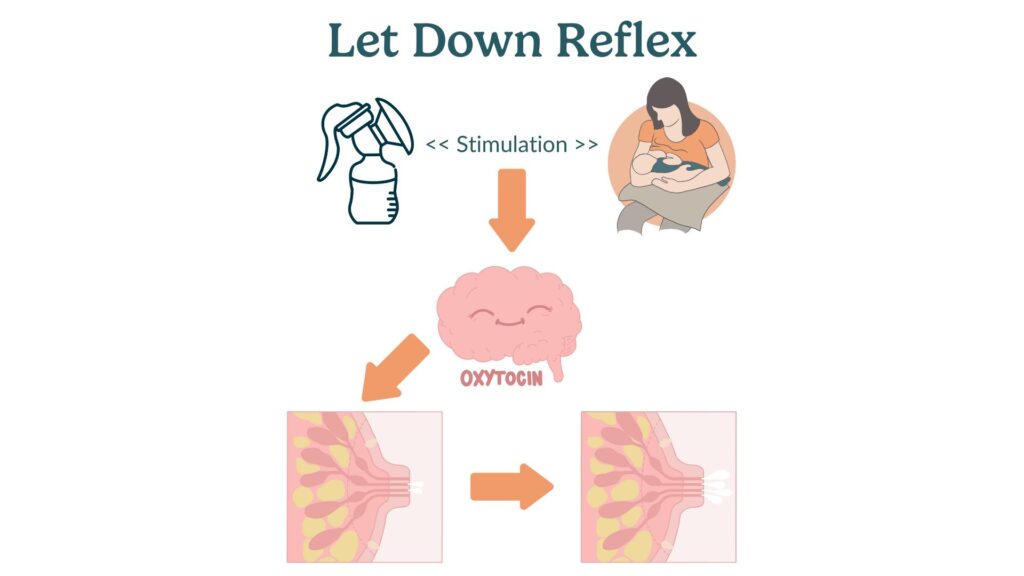let down reflex

Let-down reflex
The let-down reflex, or milk-ejection reflex (MER), is a natural process that helps your milk flow to your baby during breastfeeding.
When your baby sucks at your breast, your body releases a hormone called oxytocin. This hormone causes the muscles around the milk-producing glands (alveoli) in your breast to contract. These contractions push milk through the milk ducts and out through the nipple, making it easier for your baby to get the milk they need. The let-down reflex usually happens within 1-2 minutes of baby sucking (or pumping). Learn more about let-down.
What to watch out for
Some may experience issues with the let-down reflex. Here are a few things to watch out for:
- Delayed or absent let-down: Sometimes, stress, anxiety, or pain can interfere with the let-down reflex. If you notice that your milk isn’t flowing well, try to relax and create a calm environment. Gentle breast massage or warm compresses can also help stimulate let-down. If the problem persists, consider reaching out to a lactation consultant for support. Schedule a consultation.
- Overactive let-down: This happens when milk flows too quickly, causing your baby to cough or choke. If you have an overactive let-down, try nursing in a reclined position to slow your milk flow. You can also express a little milk before feeding to reduce the initial force. If the issue continues, consult with a lactation expert for further advice.
- Painful let-down: Some experience a tingling or painful sensation when milk lets down. This sensation should be brief. If the pain is severe or lasts longer, it could indicate an underlying issue, such as a breast infection. In this case, seek medical advice promptly. Learn more about managing and preventing mastitis.
- Feelings of despair, depression: Some mamas experience D-MER, or dysphoric milk ejection reflex, where during the letdown, they have intense feelings of sadness. This usually only lasts for a few minutes during the letdown and not during the entire feeding. Consult with an IBCLC for suggestions on how to manage this condition.
Physical limitations or health circumstances
Certain conditions can affect the normal function of the let-down reflex:
- Stress and anxiety: High stress levels can block the release of oxytocin, making it harder for milk to flow. Learn how to boost oxytocin for better breastfeeding.
- Previous breast surgery: Surgery, such as breast reductions or augmentations, can affect the nerves and milk ducts involved in the let-down reflex.
- Hormonal imbalances: Conditions like hypothyroidism or diabetes can impact hormone levels and interfere with the let-down reflex.
- Medications: Some medications, particularly those affecting hormones, may interfere with the let-down reflex. Always consult with a healthcare provider about any medications you are taking while breastfeeding.
Other terms
Here are some related terms that can help you better understand breastfeeding:
- Oxytocin: This hormone controls the let-down reflex. It helps contract the muscles around the milk glands to push milk through the ducts. Learn more about oxytocin.
- Prolactin: Prolactin, stimulates milk production in the alveoli.
- Alveoli: These are small sacs in your breast tissue that produce and store milk.
- Milk ducts: Tubes that carry milk from the alveoli to the nipple.
- Engorgement: This occurs when breasts become overly full of milk, causing discomfort and potential issues with the let-down reflex. Learn more about managing engorgement.


